Lucy Macdonald
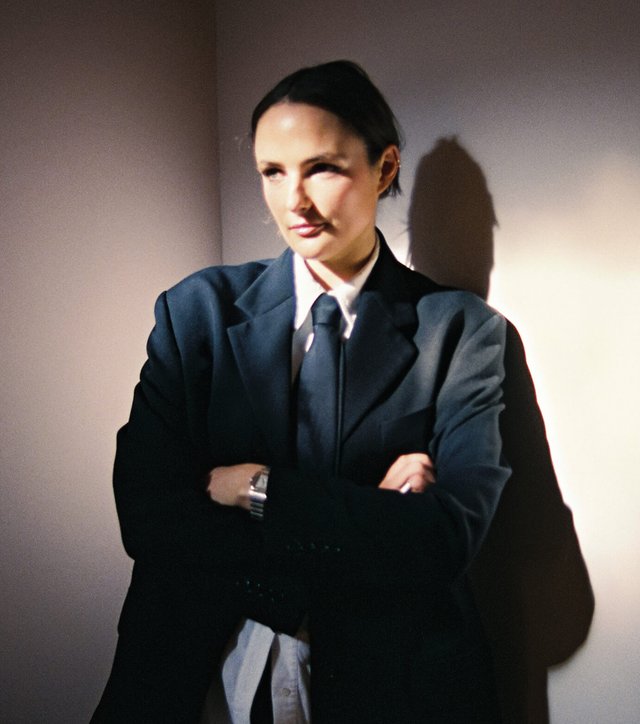
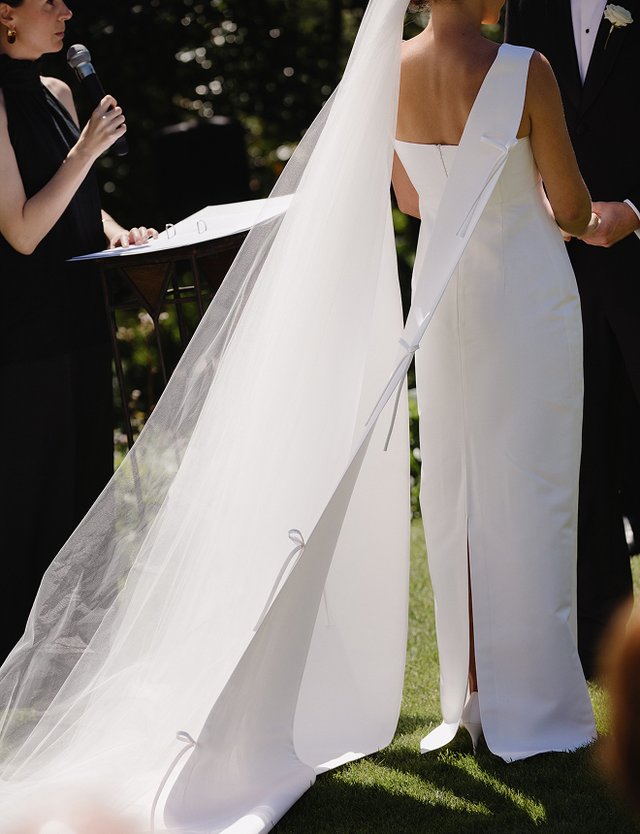
Hazel Redmond and Andy Hill’s wedding in Hawke’s Bay.
Photo: Jesse and Jessie.
When Lucy Macdonald designs a garment, it’s never just about the dress. It’s about the person wearing it, their instincts, their style, the way they move through the world. Her process is deeply personal, driven by conversation, collaboration and an eye for details that others might overlook. It’s an approach shaped by experience. Lucy trained in Paris, studied in London at the famed Central Saint Martins, and worked inside one of fashion’s most renowned ateliers. But it’s in her quiet studio in Auckland, surrounded by sketches, calico toiles and stacks of hand-picked fabrics, that her work feels most at home.
"I didn’t set out to do bridal," she says. “But the kind of work I love doing, custom, considered, meaningful, it made sense to find a way to do it on my own terms.”
Now, with a growing client list and a reputation for designs that are as thoughtful as they are beautiful, Lucy is quietly reshaping the bridal experience, one commission at a time. “I used to have dreams, nightmares, really, about walking down the aisle. The idea of everyone staring at me made my skin crawl.” She laughs. “It’s funny now, given what I do.”
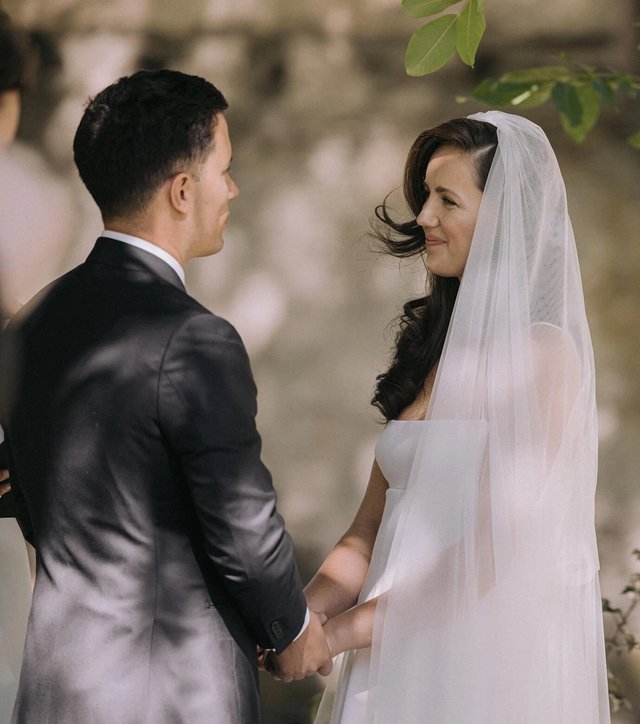
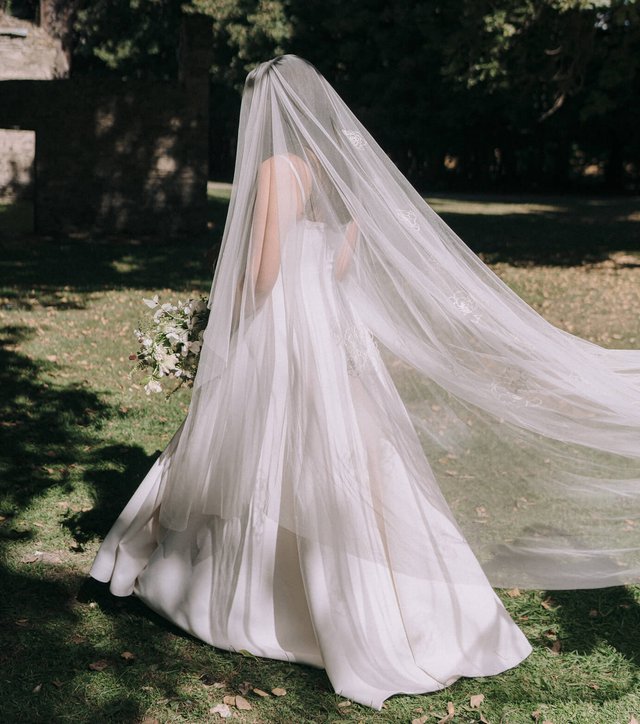
Camilla and Robbie’s wedding in Queenstown. Camilla wears an Emilia Wickstead gown and Studio Lucy Macdonald custom veil. Photo: Danelle Bohane.
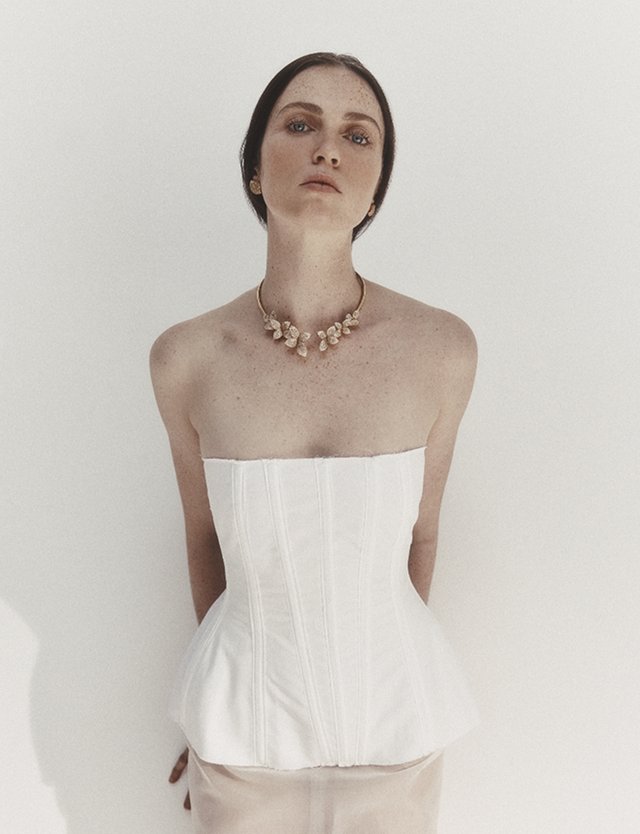
Corset and skirt by Studio Lucy Macdonald. Pasquale Bruni necklace from Partridge. Photo: Holly Sarah Burgess.
Lucy grew up immersed in art and design, always in the art room at school, always drawing or printmaking or experimenting with materials. But after finishing school, she took a different direction, studying political science, French and Spanish. “I really thought I was going to work at the United Nations,” she says with a chuckle. “Translation, diplomacy, that kind of thing.”
She completed her first three years in Melbourne and her final year in Paris, and it was there, almost by accident, that fashion came back into focus. “I’d always known about Parsons,” she says. “And one day on my way to work, I stopped in and ended up in a conversation with the admissions officer. It just kind of happened.” All of a sudden, the door to fashion and design as a career was opened.
She was offered a scholarship, but instead of heading to New York, she moved to London and enrolled at Central Saint Martins. “It felt like a more authentic fit,” she says. “Greater opportunities for bold experimentation and self learning.”
What started as a foundation year became a full BA (Hons) in textile design. Lucy specialised in woven and printed textiles, and while she loved the traditional techniques, she always had her eye on the end result. “I was never just making fabric,” she says. “I always wanted to know how it would be used, how it would sit on the body.” Speaking with Lucy I am struck by her deeply artisanal approach. She is a designer in every sense, with a meticulous attention to detail and a desire to create garments in a truly original way. During one of her internships, Lucy designed 12 looks from scratch that she presented to the senior creative team. “But all they wanted to know was what I was referencing,” she tells me, “I was trying to explain that they just came from my brain,” she laughs, “but basically they had just wanted me to copy or reinterpret designs that already existed, and I was devastated.”
For Lucy, fashion design is as much an art form as it can be a commercial proposition, and she strives to keep those two (often oppositional) ideas in some kind of equilibrium within her work. Her view, it seems, is to give fashion (her view of it, at least) the craft credibility it deserves, and in doing so, help customers to understand its intrinsic value and inherent longevity.
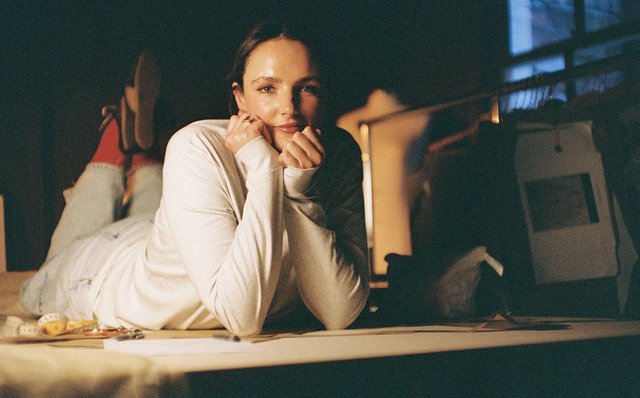
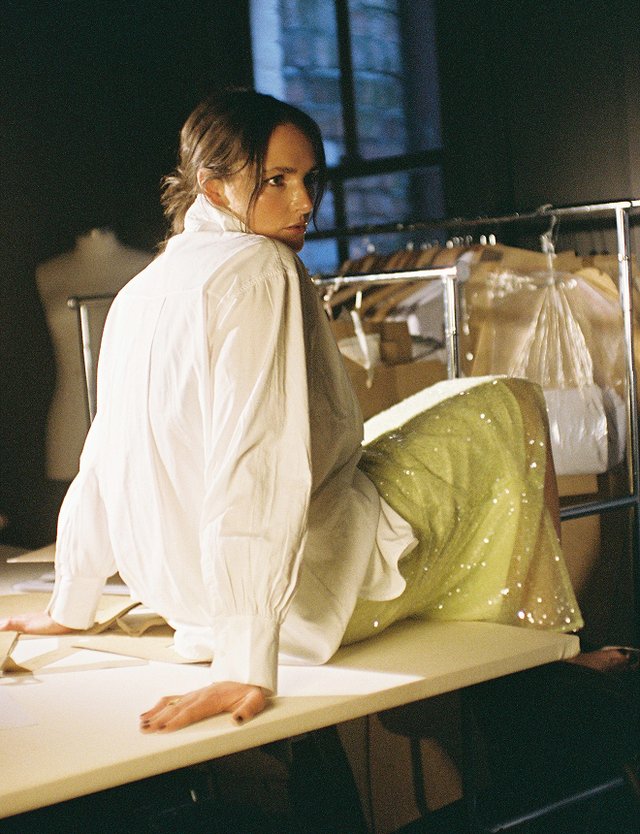
Lucy Macdonald. Photos: Crystal Chen
After graduating, she took on internships at fashion houses and, like many young designers, prepared herself for the long slog into the industry. But in a happy twist of fate, a nannying job fell into her lap and it turned out to be for UK-based New Zealand designer, Emilia Wickstead.
"I’d never met her before,” Lucy tells me. “I just showed up at the house one day to meet the kids.” A few weeks later, she was invited to visit the atelier for a quick look behind the scenes. “From that day I never left,” she tells me. “I was handed a task and just did it, then another, and another, she pauses. “At the end of the day they asked if I could come back the next day.” By the end of the week, she was flying to New Zealand with the team to help produce a campaign.
From there, things moved quickly. Lucy was offered a full-time position and eventually promoted to run Emilia Wickstead’s bespoke and private client division. Despite being young, her role involved everything from design to fittings to managing a team of pattern cutters, machinists and interns, and working directly with stylists and clients.
"It was a huge learning curve,” she says. “But I loved it. I loved how hands-on it was, how close I could get to every stage of the process.” She also loved the people, many of whom had spent decades honing their skills. “You learn a lot from working with people who are real experts at their craft.”
Still, after several years in London working in one of the most coveted roles in the industry, family circumstances demanded a return home, and Lucy came back to New Zealand not entirely sure what would come next. “I didn’t have a grand plan,” she says. “I just needed to stop and take stock.”
Back home, requests started unexpectedly coming in from friends and acquaintances asking if she’d consider designing something custom. “At first it was casual,” she says. “But I quickly realised how much I enjoyed it.” Things evolved from there.
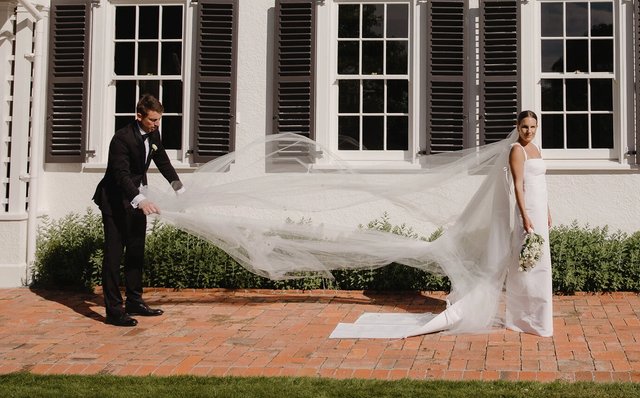
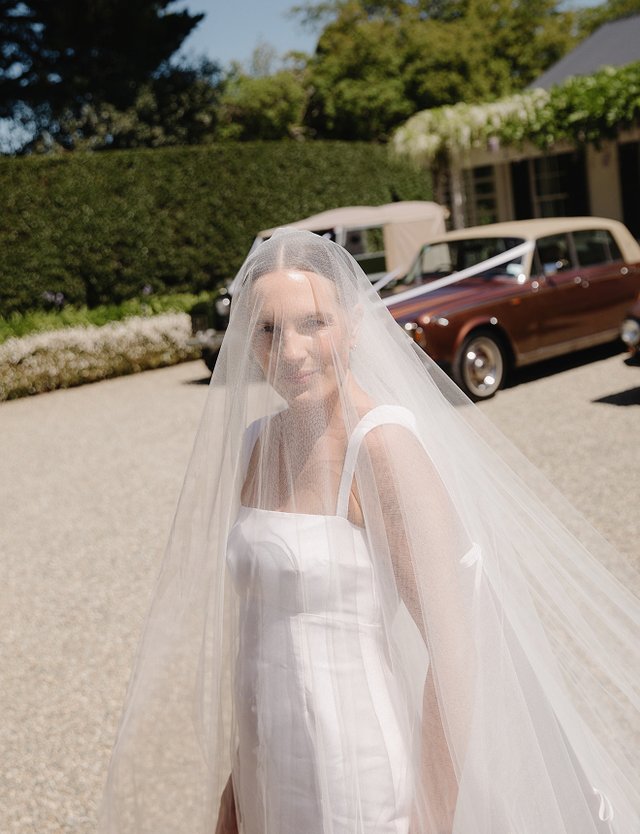
Hazel Redmond and Andy Hill’s wedding in Hawke’s Bay.
Photos: Jesse and Jessie.
Now, the designer works primarily on a made-to-order basis, creating bridal, eveningwear and custom pieces for clients in New Zealand and abroad. She works slowly, collaboratively and with a strong focus on quality and a reverence for traditional craftsmanship. “My process always starts with a conversation,” she says. “Sometimes it’s coffee, sometimes it’s wine, but I want to understand the essence of the individual, what they like, how they want to feel, how they normally dress. I like to connect to what informs their sartorial decision making so that I can honour this within the design process.”
From there, she sketches (often 30 looks or more) before refining a smaller set of options to present to her client. “I usually include a few ‘wild cards’,” she says with a laugh. “Designs that I suspect will take my client slightly outside of their comfort zone, just to see what resonates as this is so often where the magic happens. Women are usually capable of pulling off something far more expansive than they give themselves permission to imagine.” More often than not, she reveals, those are the ones that her clients choose.
The next step is fitting, which Lucy tells me she sees as a chance to experiment. “We always work in calico first,” she says. “Sometimes up to five rounds before we cut the final fabric.” The process is hands-on, and often involves a series of major changes. “It’s very physical, ripping seams, pinning, reshaping. What works on paper doesn’t always work in 3D.”
But her goal is always timelessness, choosing beautiful, well-made textiles (usually from Italy) that will last decades. “Really, the world doesn’t need more clothes,” she says. “But it can always use something meaningful, something made with care and that truly lasts… something that could
be passed down.”
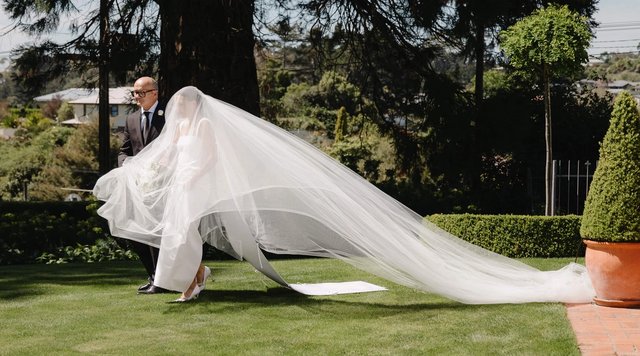
Hazel Redmond and Andy Hill’s wedding in Hawke’s Bay. Photo: Jesse and Jessie.
It’s not just about the dress design either. Lucy explains how she
is often also asked to help with styling, accessories, even moodboarding hair and makeup looks. “I want the full picture to make sense,” she says. “It all matters.”
Still, she’s clear about her boundaries. “I won’t replicate something someone else has worn,” she says. “It’s not good for the client, and it’s not good for me. They won’t get the best out of me if I’m just copying someone else’s work.”
Instead, Lucy aims to offer something more considered, fashion that reflects the wearer, not the trend cycle. “So many brides get engaged and suddenly feel like they have to reinvent themselves,” she says. “They save a million reference images and forget what suits them, what they actually like.” Her role, she explains, is often to help her clients come back to themselves. “Sometimes you just need an outside perspective to say, ‘Have you thought about this?’ Or ‘You actually suit this shape so let’s work with it.’” This collaborative approach has meant that many of Lucy’s clients have become close friends. “It’s such a personal process,” she says. “You spend a lot of time together. And by the end, there’s so much trust and mutual respect in the room.” Her garments truly reflect her clients’ worlds. In this way, she is an interpreter — perhaps not exactly the kind she had once envisioned herself being at the United Nations, but one nonetheless.
Looking ahead, Lucy tells me she is just focused on growing her business, on building her client base and potentially branching into other areas like bridal styling. After all, she possesses the kind of taste that would make any bride feel transcendent on their big day. "I love what I’m doing right now,” she says. “I'm just taking it day by day. I have ideas around the bigger picture but at the moment, I'm working towards the various projects that I have on the go, and seeing where they take me.”
Related stories
- People
- Style,
- Planning,
- People
- Weddings
- Weddings
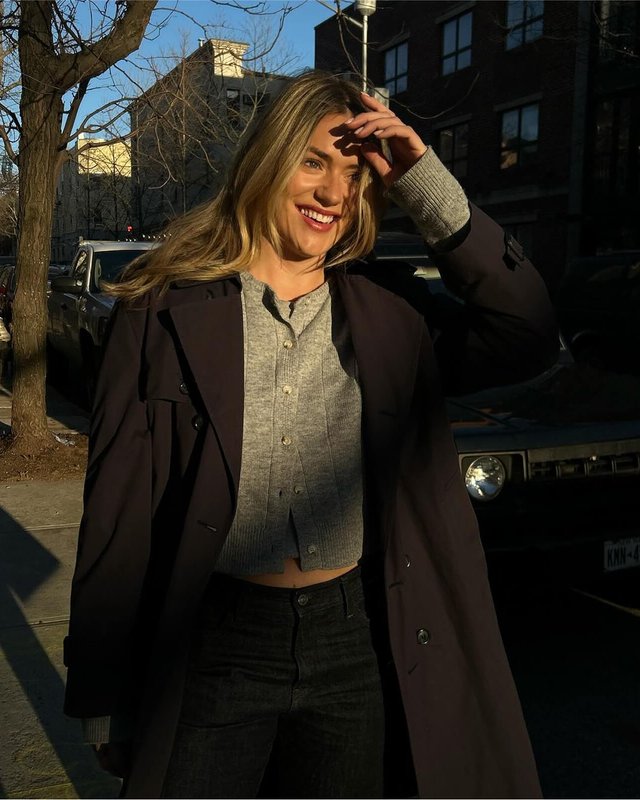
Field notes: Our Writer on Discovering Love in the Everyday
In the spirit of experimentation, writer Katie Muirhead hypothesized that love, true love, is most often found in the everyday. And in the quiet moments and simple rituals, she discovered something lasting.
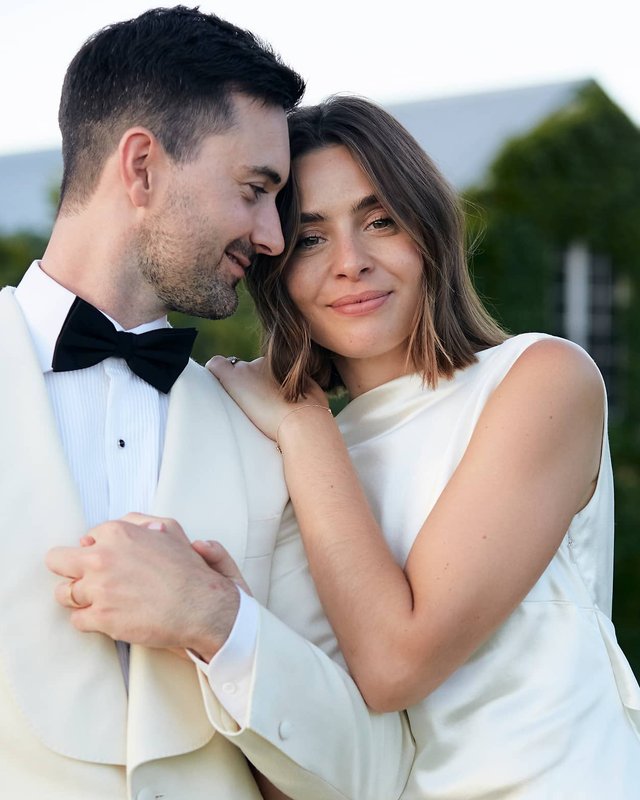
7 Fashion-Forward Brides Share Their Best Wedding Advice Ever
Some of the coolest brides we know share their modern visions for a picture-perfect wedding day – from planning tips to what they’d do differently. Take note.
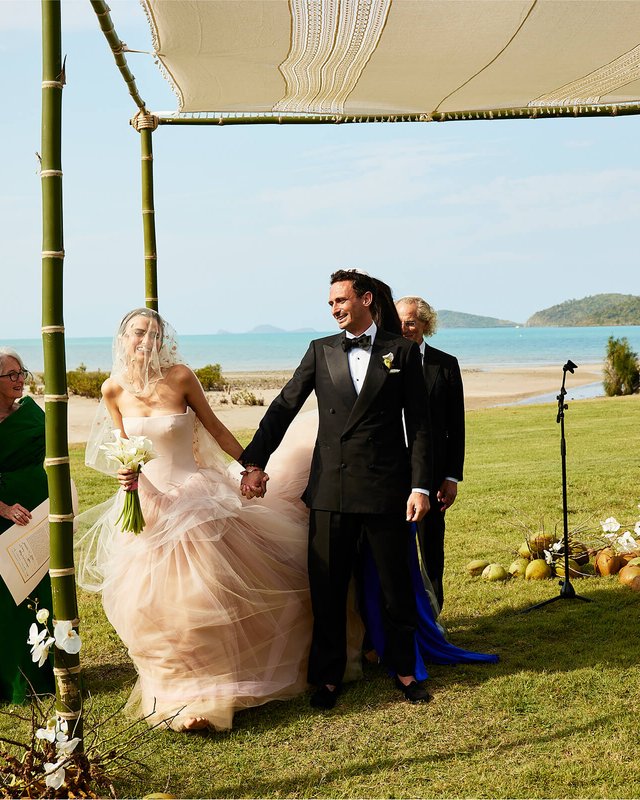
Paradise Found
Barefoot by the beach, the bride wearing Vera Wang — this fun, irreverent Whitsundays wedding was a masterclass in relaxed glamour.
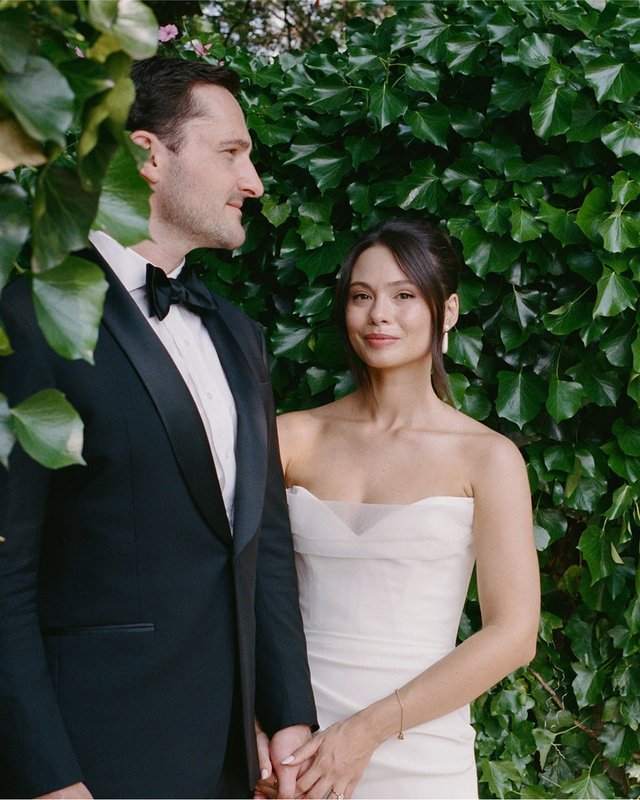
All I Need Is You
From a family introduction to a Roman proposal, this couple's love story culminated in a wedding set against New York’s iconic skyline.

